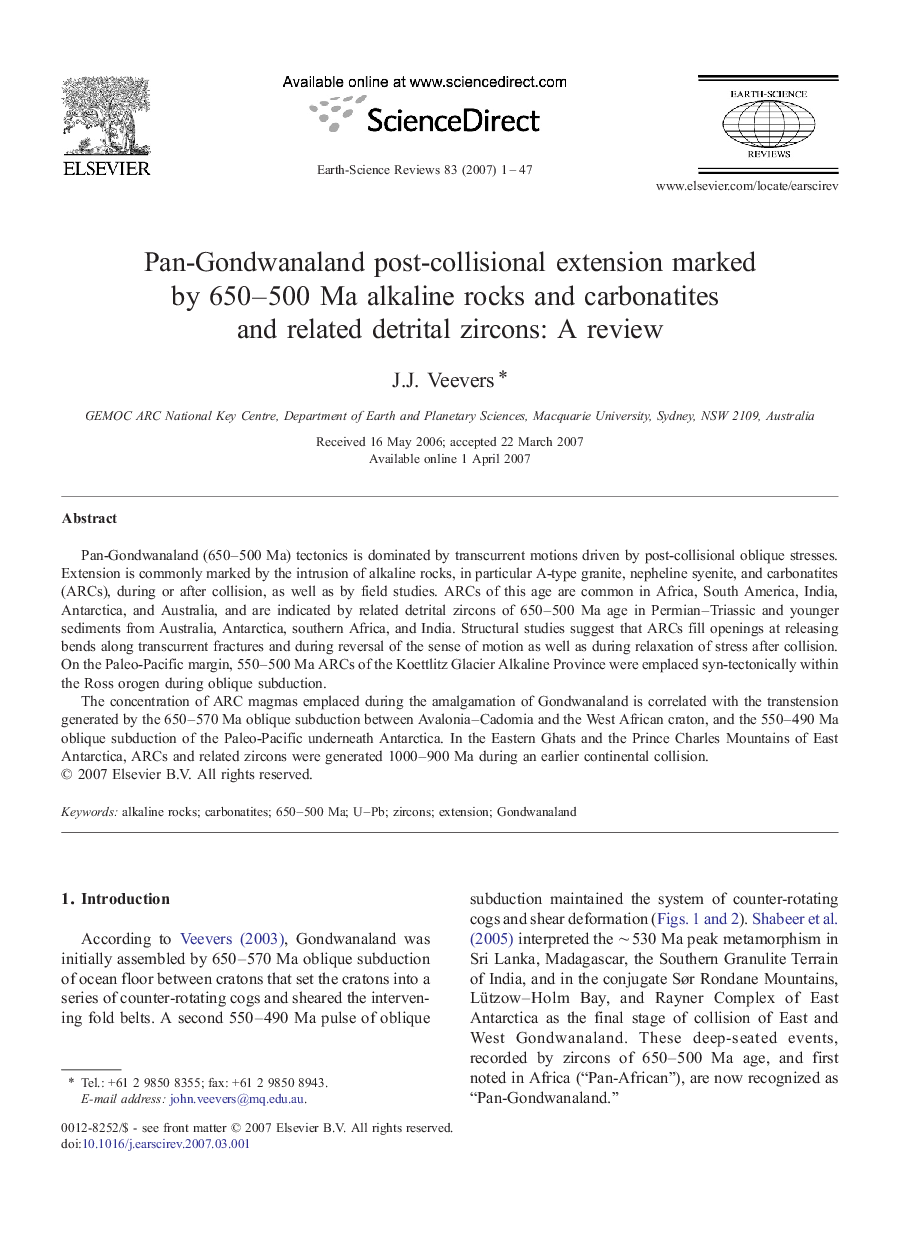| کد مقاله | کد نشریه | سال انتشار | مقاله انگلیسی | نسخه تمام متن |
|---|---|---|---|---|
| 4726370 | 1640043 | 2007 | 47 صفحه PDF | دانلود رایگان |

Pan-Gondwanaland (650–500 Ma) tectonics is dominated by transcurrent motions driven by post-collisional oblique stresses. Extension is commonly marked by the intrusion of alkaline rocks, in particular A-type granite, nepheline syenite, and carbonatites (ARCs), during or after collision, as well as by field studies. ARCs of this age are common in Africa, South America, India, Antarctica, and Australia, and are indicated by related detrital zircons of 650–500 Ma age in Permian–Triassic and younger sediments from Australia, Antarctica, southern Africa, and India. Structural studies suggest that ARCs fill openings at releasing bends along transcurrent fractures and during reversal of the sense of motion as well as during relaxation of stress after collision. On the Paleo-Pacific margin, 550–500 Ma ARCs of the Koettlitz Glacier Alkaline Province were emplaced syn-tectonically within the Ross orogen during oblique subduction.The concentration of ARC magmas emplaced during the amalgamation of Gondwanaland is correlated with the transtension generated by the 650–570 Ma oblique subduction between Avalonia–Cadomia and the West African craton, and the 550–490 Ma oblique subduction of the Paleo-Pacific underneath Antarctica. In the Eastern Ghats and the Prince Charles Mountains of East Antarctica, ARCs and related zircons were generated 1000–900 Ma during an earlier continental collision.
Journal: Earth-Science Reviews - Volume 83, Issues 1–2, July 2007, Pages 1–47